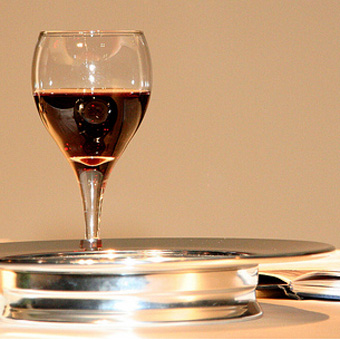Receiving the sacrament of the Holy Eucharist from the cup is not a requirement, but receiving the blood of Christ is a fuller sign of the mystery we celebrate.
This question continues to be asked, reflecting an uneasiness for some laypeople about resuming a practice unknown in the Roman Catholic Church for more than 600 years. In the church’s first thousand years, Communion under a single species occurred only as a pastoral exception for infants, the sick, and the dying. The gradual reserving of the cup to ordained clergy early in the second millennium was to safeguard against spills and counteract the erroneous view that the laity needed both species to receive the whole Christ.
Today’s restored opportunity to receive the sacramental Blood as well as Body of Christ lets us equally honor two invitations: “Eat my Body. Drink my Blood.” Receiving from the cup is a heightened liturgical experience of sacrifice, covenant, unity, and sacred banquet.
In the gospels, drinking from the cup is a sign of courageous discipleship. “Can you drink the cup that I will drink?” Jesus challenges. In the Garden of Gethsemane the same image expresses the ordeal awaiting Jesus. Not surprisingly, then, Communion from the cup implied for the early Christians an openness to martyrdom, a willingness to lay down one’s life.
If the Eucharist is the renewal of our covenant relationship, it is the cup that explicitly conveys this. In biblical accounts of the first Eucharist, and in our recollection at every Mass, each invitation to the chalice includes a reference to covenant. Our sacramental participation in the new covenant is most clearly expressed by sharing in the cup because-as Hebrews 9 reminds us-blood is a central sign of covenant.
In the earliest generations of the church, the “breaking of the bread” suggested oneness because communicants shared a single loaf. Although separate wafers have clearly weakened that image, the shared cup resonates today with comparable implications. In our world, drinking from the same vessel is a dramatic expression of intimacy and connection-a rare practice even at a family table, a powerful statement in liturgy.
Our Catholic tradition is deeply rooted in signs. But, as the Second Vatican Council recognized, the passage of centuries obscured some signs, and unfortunately some of the sacramental signs had shrunken to minimal proportions. A couple of drops of water sufficed for Baptism. A thumbprint of oil sufficed for sacramental anointings. Tasteless wafers sufficed for eucharistic bread.
The Second Vatican Council made a deliberate effort to recover and clarify the sacramental signs, including the decision that “Communion under both kinds may be granted when the bishops think fit.” Documents inspired by the council continued the restoration. The General Instruction at the front of the Roman Missal advised that the faithful should be guided to desire Communion under both species because “Holy Communion has a more complete form as a sign when it is received under both kinds.” Repeatedly we are invited to seek fullness rather than legal minimums.
Reception from the cup is definitely an option, not a requirement. Children’s participation cannot be presumed without parents’ approval. Recovering alcoholics’ sensitivities must be respected. And reasonable concern would make all of us refrain from the cup at times when our poor health might put others at risk. Some parishioners have such a strong fear of contagion that they may never be comfortable doing it.
Our short answer to anyone who asks, “Do I have to receive from the cup?” is certainly no; it is not imposed. As a concerned friend or parent, however, we might gently add, “But do you realize what you are missing?”













Add comment